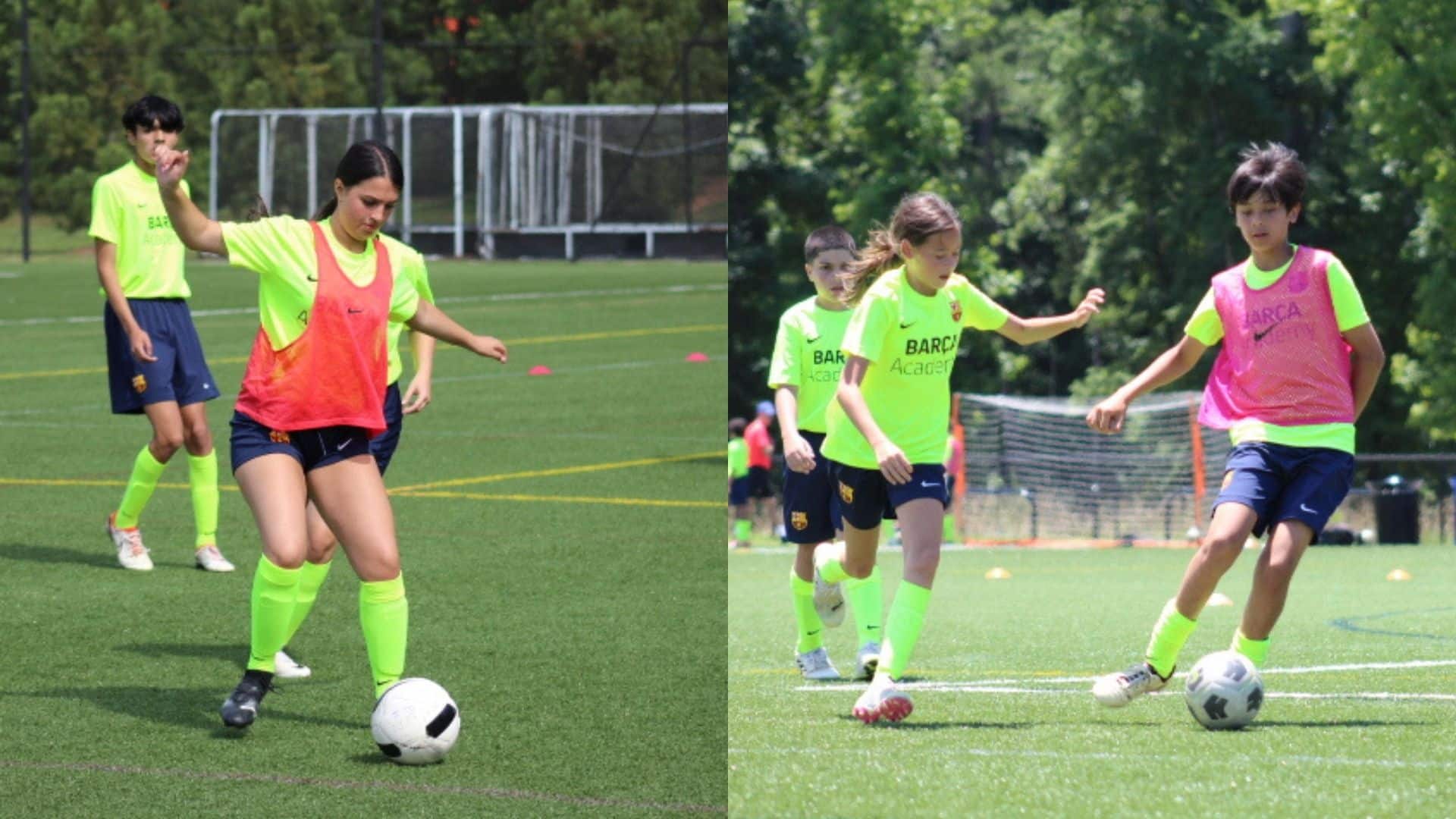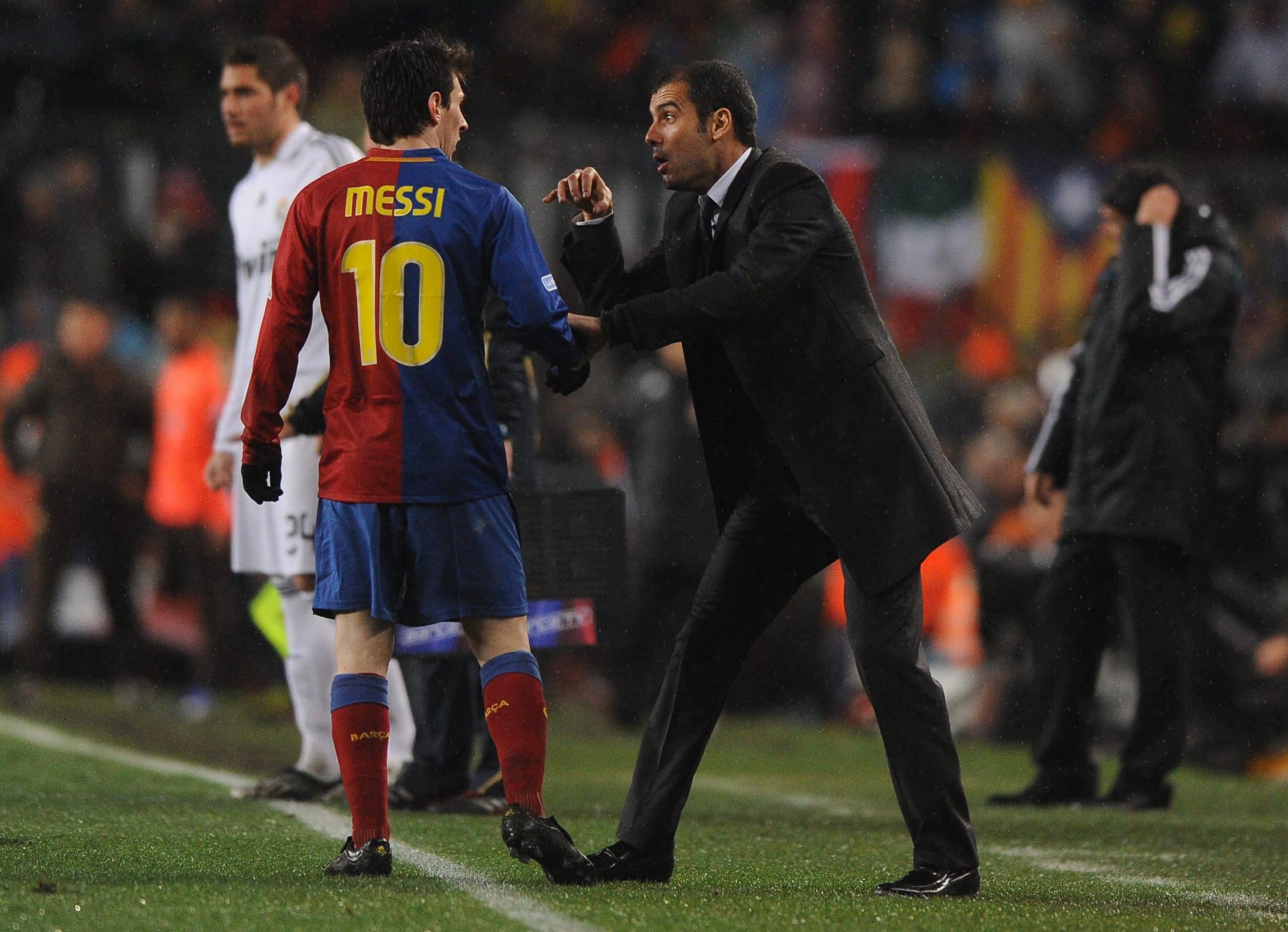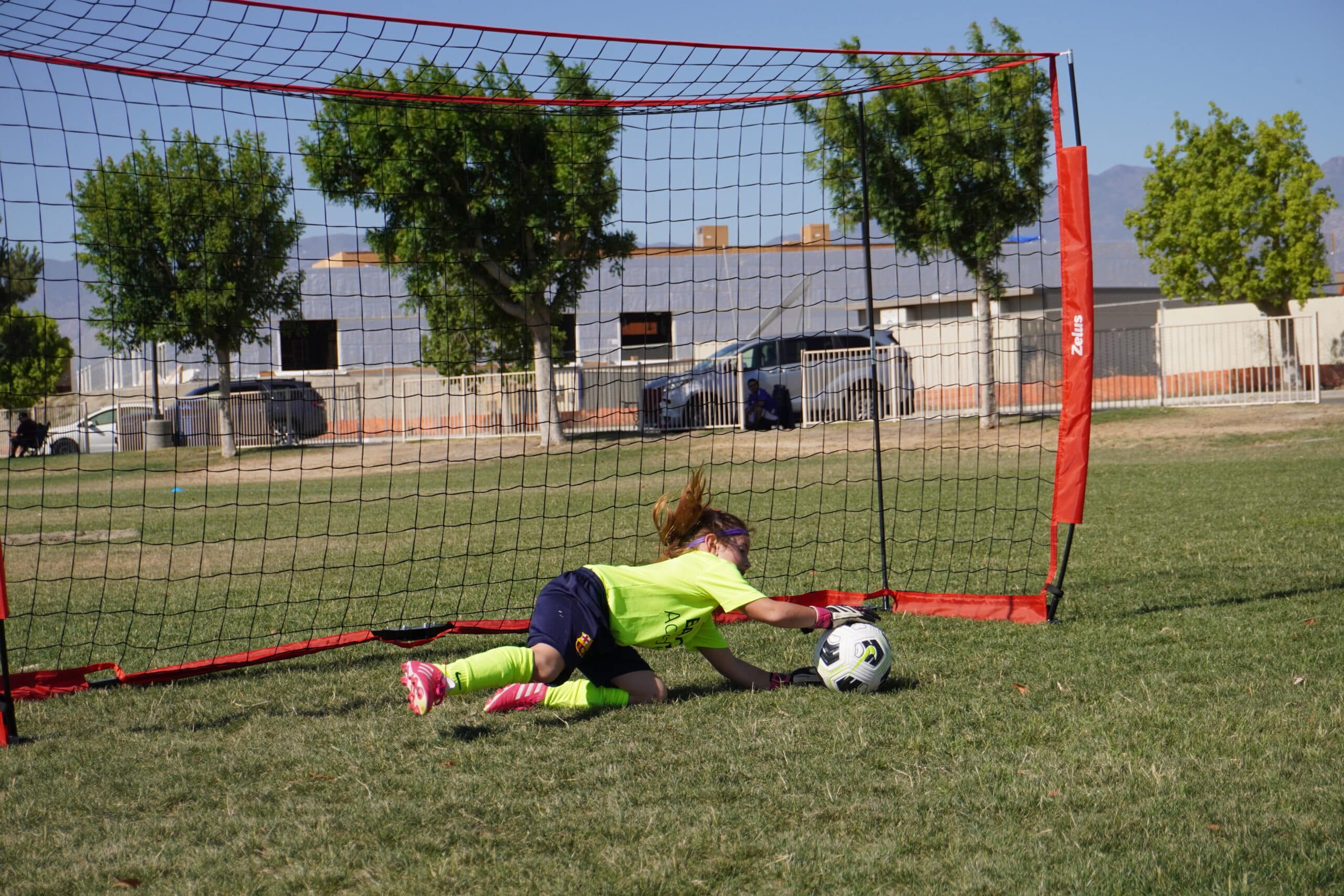If you’re a soccer enthusiast, you might have heard the term “False Nine” thrown around in discussions. It’s a captivating strategy that can completely turn the tables in a match. However, it’s not always easy to understand for newcomers. So let’s delve into it!
In essence, the False Nine is a tactical maneuver in soccer where the player who is traditionally expected to act as the main striker – the number nine – doesn’t play in the usual striker’s position. Instead of sticking around the opponent’s penalty area ready to score, this player drops deeper into midfield. This unexpected switch in the playing position is what gives the tactic its name. The striker is ‘false’ because they are not positioned where one would typically expect.
- Striker: this is generally the player on the team responsible for scoring goals. In traditional formations, they play closest to the opponent’s goal.
- Midfield: this refers to the middle area of the field of play, between the two penalty areas. Midfielders generally have both defensive and offensive duties.
At first glance, this tactic may seem counterproductive. After all, why would a team want their main goal-scorer to be further away from the opponent’s goal? Well, it’s a bit of strategic trickery. By dropping into the midfield, the False Nine can receive the ball and distribute it to other players. Through this, they create scoring opportunities. Simultaneously, they drag opposing defenders out of position, creating space for teammates to exploit. It’s a crafty approach that can yield significant rewards.
However, not just any player can successfully act as a False Nine. It requires a unique skill set, including excellent ball control, the ability to hold on to the ball under pressure, exceptional passing skills, and a keen sense of positioning. Not to mention, a natural goal-scoring instinct is still essential. The False Nine will need to strike when the opportunity presents itself.
It’s also important to note that employing a False Nine isn’t just about the individual player, but the team’s overall strategy. The team needs to adapt to this style of play, ensuring they can capitalize on the spaces created, and cover defensively when the False Nine is in possession.
The False Nine tactic can be a game-changer, causing unpredictability and chaos in the opponent’s defense. It is a strategic move that makes soccer even more exciting and thought-provoking than it already is. But remember, it’s not just about having the right player. It is about the team’s willingness and ability to adapt to this unconventional style of play.

Historical overview of the False Nine strategy
Now, imagine yourself a football enthusiast in the roaring ’20s. The air is full of excitement, the crowd is cheering and the False Nine soccer strategy is beginning to take shape in the football world.
The term ‘False Nine’ may sound somewhat mysterious, but it’s actually a soccer position with deep, rich roots dating back nearly a century. The name ‘False Nine’ is a bit of a misnomer, as the player in this position is not really a traditional centre forward (the number 9). Instead, they operate as a more withdrawn forward, often dropping deep into midfield.
Origins of the False Nine
Let’s take a trip back to the 1930s when the False Nine was first seen in action. The credit goes to the Hungarian team of the era, known as the Mighty Magyars. The team’s use of a deep-lying centre forward (or a ‘False Nine’) disrupted the traditional tactics and formations of their opponents, leading to significant success on the field.
However, the term itself didn’t come into common use until the 1950s with the rise of the legendary Hungarian player, Nandor Hidegkuti. He was renowned for his ability to draw defenders out of position by dropping deep into midfield, creating space for his teammates to exploit. He was the quintessential ‘False Nine’.
Revival of the False Nine
Fast forward a few decades to the 2000s, the concept of the False Nine was rejuvenated by football guru Roma Luciano Spalletti. Struggling with a lack of traditional strikers due to injury, Spalletti decided to reinvent his team’s tactical approach. He chose Francesco Totti, a natural attacking midfielder, to play as a ‘False Nine’. This move was a masterstroke, with Totti excelling in the role and Roma enjoying a successful season as a result.
The False Nine in Modern Football
In recent years, the False Nine strategy has become increasingly popular, largely thanks to one player in particular: Lionel Messi. Under the guidance of coach Pep Guardiola, Messi flourished in the False Nine position. He scored an astonishing number of goals and revolutionizing the role in the process.
So, while the False Nine might seem like a novel concept, it’s actually steeped in footballing history. From the Mighty Magyars of the ’30s to the genius of Messi in the 21st century, the False Nine soccer strategy has been a game-changer in the world of football.

The Evolution and Modern Adaptations of the False Nine
It’s no surprise that the world of football is rife with strategic adjustments and innovative techniques. Among the most fascinating is the role of the False Nine. But, what makes this position truly fascinating is its evolution and the modern adaptions that make it relevant in today’s game.
The evolution of the False Nine
Originally, the False Nine strategy was perceived as a revolutionary concept that completely altered the game’s dynamic. However, it didn’t just appear out of thin air. It evolved gradually over time, with coaches and players pushing boundaries to maximize their team’s potential.
In the early days, the False Nine was more of a decoy player, intended to deceive the opposition and create space for other players. As the game evolved, this strategy became more of a ‘playmaker’. Dropping deep into the midfield, drawing out defenders, and creating goal-scoring opportunities.
It must be said that the evolution of the False Nine has been largely influenced by the players who’ve mastered it, such as Lionel Messi and Francesco Totti. Their skill sets have added layers to this role, making it even more versatile and unpredictable.
Modern adaptations of the False Nine
Fast forward to the present day, and the role of the False Nine has been adapted and redefined. In modern football, a False Nine is no longer just a decoy or playmaker. They’re now an integral part of the attack, often the focal point.
- The fluid False Nine: this is a style where this strategy frequently swaps positions with the wingers or midfielders. This fluid movement can cause confusion among the opposition’s defence, creating opportunities for goal-scoring.
- The deep-lying False Nine: in this style, the False Nine drops even deeper into the midfield, almost acting like an additional playmaker. This gives the team an extra man in midfield and allows for greater control over the game.
- The target man False Nine: this is a more physical adaptation of the False Nine, where the player uses their strength and aerial ability to hold up the ball and bring others into play.
No two False Nines are the same – the role varies depending on the team’s strategy and the player’s skill set. The key is flexibility, unpredictability, and a keen understanding of the game.
Impact on modern football
The False Nine’s evolution has had a profound impact on modern football. It has not only changed the way teams attack but also how they defend. Defences now need to be more flexible and adaptive, capable of dealing with the False Nine’s unpredictable movements.

Notable Players who have excelled as a False Nine
Over the years, we’ve seen some truly extraordinary footballers shine in the false nine position. Their exceptional prowess on the field not only made matches more thrilling but also revolutionized this position and strategy. Let’s dive into the world of soccer and get acquainted with some of these memorable players.
Lionel Messi
When we talk about the false nine position, it’s impossible not to mention Lionel Messi. Under Pep Guardiola’s management at Barcelona, Messi redefined the false nine role. His tactical intelligence, dazzling dribbling skills, and unmatched vision allowed him to drop deep into midfield, draw defenders out of position, and create attacking opportunities. This innovative use of the role was pivotal in Barcelona’s success, rendering Messi’s name synonymous with the false nine.
Francesco Totti
Another classic example of a successful false nine is the legendary Francesco Totti of Roma. Totti’s technical skills, creativity, and striking ability made him perfect for this role. As a false nine, he dropped from the traditional striker’s position into midfield, thus confusing defenders and creating space for his teammates. Totti’s intelligent use of the false nine strategy left a significant mark on Italian football.
Roberto Firmino
Fast-forward to the modern era, and we have the Brazilian Roberto Firmino at Liverpool. Firmino has blossomed into a proficient false nine. His defensive contributions, work ethic, and ability to link up play make him an invaluable asset to the team. Even though he might not score as many goals as traditional strikers, his role in pressing, creating chances, and disrupting the opponent’s defense has been crucial in Liverpool’s successes.
Kevin De Bruyne
Another contemporary maestro of the false nine position is Kevin De Bruyne at Manchester City. Known for his exceptional passing ability and vision, De Bruyne has been instrumental in City’s attacking play. When he drops deep from the striker’s position into midfield, he creates spaces and chances that other players exploit. His performances have not only highlighted his versatility but also the potential of the false nine role in modern football.
These players have truly mastered the art of the false nine. Their impact on the field goes beyond scoring goals. They’ve shown us how crucial the role of a false nine can be in disorganizing the opposition’s defense and creating opportunities for other players to shine. And that, my friends, is the beauty of football!

The Tactical Advantages of Using a False Nine
Hey there, fellow soccer enthusiasts! Let’s dive deep into the thrilling world of soccer strategies, particularly the false nine and its tactical advantages.
So, what makes the false nine such a fascinating and effective strategy? Well, for starters, the surprise element it brings to the game is unparalleled.
An Element of Surprise
Typically, defenders expect to mark a traditional center-forward. When a team employs a false nine, defenders often find themselves in a bind, not knowing who to mark, creating space and confusion.
Increased Flexibility
Another advantage of the false nine strategy is flexibility. A player in the false nine position can drop back into midfield, add numbers, and create superiorities. This move creates multiple passing options, making it harder for opponents to predict the flow of the game.
Possession Play
False nine is perfect for a team that thrives on possession-based play. The strategy facilitates ball retention and offers a broader range of passing and attacking options. Possession play also allows for more control over the pace of the game and can often tire out opponents.
Creating and Exploiting Space
One of the most tactically sound benefits of a false nine is the ability to create and exploit space. As the false nine drops deep, they drag the opposition’s central defenders out of position, creating space behind the defense line for wingers or attacking midfielders to exploit.
Increased Defensive Contribution
Lastly, false nines can contribute defensively by dropping deep into their half during the opponent’s possession. This move bolsters the midfield and makes it tougher for the opposing team to break through.
In conclusion, the false nine is a genius tactical innovation in the world of soccer. It’s a great tool to break down stubborn defences and create new attacking avenues while maintaining possession. But remember, its success heavily relies on the right personnel and excellent understanding between teammates. The strategy requires a certain technically gifted player to perform the role of a false nine. But when executed correctly, it can be a game-changer!
Whether you’re a seasoned coach, an aspiring player, or just a superfan trying to gain more insight into the strategies of the beautiful game. Understanding the false nine and its tactical advantages can certainly deepen your appreciation for soccer. So the next time you watch a match, keep an eye out for this intriguing strategy and enjoy the game!

Case Study: successful implementation of the False Nine strategy in major leagues
The world of soccer has seen the False Nine strategy put into play in numerous high-stakes games. Let’s delve into a few noteworthy instances where it was executed with success, turning the tide in favor of the team employing this tactic.
– Barcelona and Lionel Messi
One of the most famous and successful implementations of the False Nine strategy is undoubtedly that of FC Barcelona, with the legendary Lionel Messi at the helm. With his incredible dribbling skills, unmatched vision, and lethal finishing, Messi transformed the False Nine position into an attacking force to be reckoned with.
Under the leadership of Pep Guardiola, Barcelona revolutionized the modern game of soccer through their implementation of the False Nine. Messi was given the freedom to drop deep into the midfield, dragging the opposing team’s center-backs out of position and creating space for his colleagues. This strategy was instrumental in Barcelona’s domination of football between 2008 and 2012, securing them numerous titles including the prestigious Champions League.
– Roberto Firmino at Liverpool
Another notable example is Roberto Firmino at Liverpool under the guidance of manager Jürgen Klopp. Firmino, with his exceptional work rate and unique blend of creative and defensive skills, epitomizes the role of the modern False Nine.
He often drops back to link the midfield and attack, creating confusion among the opposition’s defense and opening up space for his teammates to exploit. This False Nine strategy played a key role in Liverpool’s extraordinary Premier League victory in 2020, ending a 30-year title drought.
Italy at the 2012 European Championships
On an international stage, the 2012 European Championships saw Italy employ the False Nine strategy to great effect. With no traditional striker in the lineup, Coach Cesare Prandelli used Antonio Cassano as a False Nine, allowing him to roam and create opportunities. This tactic propelled Italy to the final of the tournament, displaying the effectiveness of the strategy even at the highest level of competition.
In conclusion, the False Nine strategy, while complex and demanding, has proven to be a game-changer in modern football when employed correctly. With the right player possessing the required skill set and tactical understanding, it can unlock defenses and create scoring opportunities that can tilt matches. As the game continues to evolve, the False Nine could very well remain a vital strategy for many teams across the globe.












